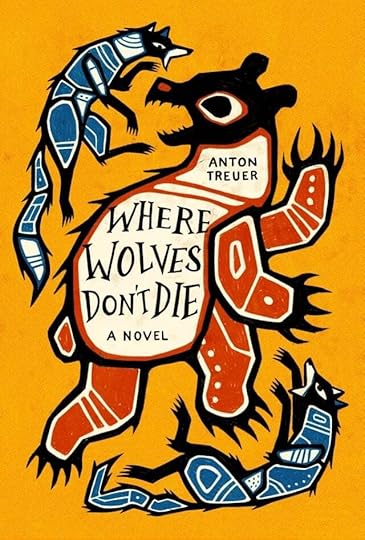Exploring Tradition and Identity in Anton Treuer’s Where Wolves Don’t Die
Where Wolves Don’t Die by Anton Treuer is a captivating coming-of-age story that connects the past with the present.

Treuer’s teen fiction novel tells the story of Ezra Cloud, a fifteen-year-old boy from Northeast Minneapolis. After a dangerous encounter with a bully, Ezra temporarily moves to live with his grandfather on the Red Gut Reservation. There, he learns traditional trapping methods from his grandfather, Liam. Each day brings new lessons about the history and traditions of the Nigigoonsiminikaaning First Nation. Ezra grows to appreciate his time with his grandfather and becomes closer to his friend and secret crush, Nora. As the trapping season ends, Liam reveals a hidden pain. Then, in a tense encounter, they face Big Bear, and Ogimaa arrives. But will it be too late?
I enjoyed this novel, though it’s challenging for me to evaluate as I’m not the target audience. I prefer adult fiction and haven’t read much teen fiction. However, from a literary perspective, this novel has all the elements of an engaging and enlightening story. Ezra, the main character, develops quickly yet believably. Early on, he leaves Northeast Minneapolis, a place where he lives but doesn’t feel at home. His departure highlights the institutional racism faced by Native Americans and other marginalized communities. This is an important aspect of the story, showing the often-overlooked realities of living as a person of color in today’s American society. Treuer wisely doesn’t make this the central theme but presents it as an undeniable reality that Natives must navigate.
Another effective element is the portrayal of Native lifeways. Treuer’s characters are three-dimensional, discerning, and empathetic, rather than flat caricatures. They are vibrant and alive, providing an authentic view of both the tragic history of Indigenous peoples in North America and their enduring traditions. I was surprised by how much I learned about trapping and found Treuer’s descriptions of the great north truly facsinating.
The two elements I found less convincing were the climax and the absence of any mention of climate change. The climax felt a bit forced and implausible, and I wonder if a less dramatic ending could convey the same lessons. Regarding climate change, I understand Treuer wasn’t aiming to make a political statement, which was a wise choice. However, I read this novel in March when temperatures in Minneapolis soared into the 50s, 60s, and yes, even 70s. Much of the novel takes place in the natural world, and the characters rely on it for their livelihood. The real threat of climate change to traditional lifeways and its impact on plants and animals deserved some mention.
Overall, I recommend this book to both youth and adults. It’s a quick, enjoyable read that offers a sense of skill and authenticity found only in master storytellers and exceptional academics like Anton Treuer.

About the Author
Anton Treuer (pronounced troy-er) is Professor of Ojibwe at Bemidji State University and author of many books. He is building an Ojibwe teacher training program at Bemidji State University and his equity, education, and cultural work has put him on a path of service around the nation and the world.



